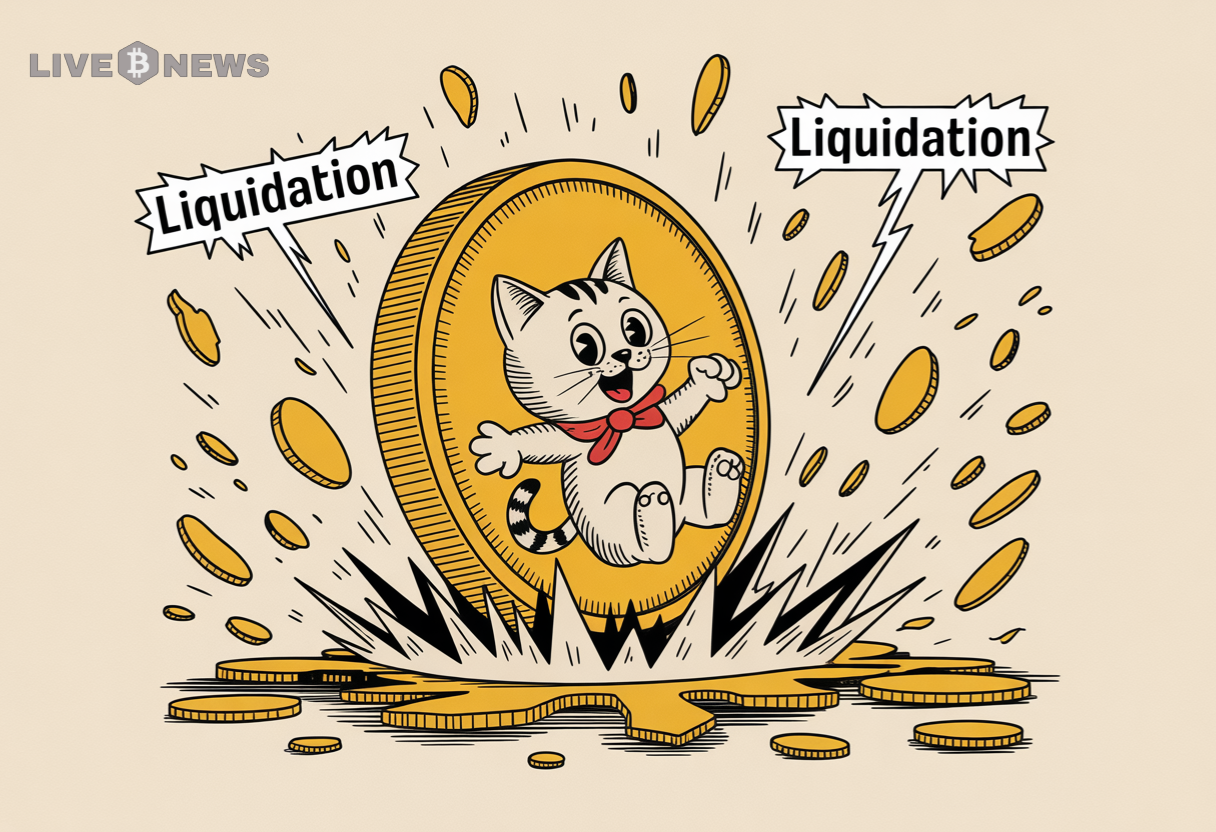Hyperliquid suffered a $4.9 million loss after a whale manipulated the POPCAT price and triggered mass liquidations.
The Bitcoin market saw fresh turbulence after Hyperliquid confirmed a $4.9 million loss from a massive exploit tied to the POPCAT memecoin.
According to on-chain data, the event began when a whale used $3 million in USDC to manipulate the token’s price, leading to a major liquidation wave that hit the platform’s liquidity pool.
Hyperliquid later described the event as a result of aggressive market behavior that exposed a weakness in its automated liquidity model.
How the Bitcoin Whale Exploit Unfolded
The event started when the trader withdrew $3 million in USDC from OKX and spread it across 19 wallets. Analysts say this was likely to hide intent and reduce suspicion.
Once the wallets were funded, the whale opened massive long positions on POPCAT using leverage and reached a combined exposure of about $30 million.
To create a false sense of market demand, the trader placed buy orders worth around $20 million at an average price of $0.21 per token. The move inflated the memecoin’s value and drew in retail traders who believed real demand was building.
🚨JUST IN: @Solana memecoin $POPCAT is experiencing heavy volatility following concerns of possible market manipulation on @HyperliquidX. In the past four hours, $63 million worth of long positions have been liquidated, including a single liquidation worth $21 million, the… pic.twitter.com/g5eREvLHjs
— SolanaFloor (@SolanaFloor) November 12, 2025
Minutes later, the whale cancelled the fake buy orders and pulled the rug out from under the market. POPCAT’s price dropped from $0.20 to $0.12 in a fall of nearly 25%.
The rapid crash caused chain liquidations across the 19 wallets. The HLP automatically absorbed the losses to maintain system balance. By the time markets stabilised, the pool had lost around $4.9 million.
At the end of the day, liquidations across hyperliquid hit a high of $63 million.
Hyperliquid Responds to Contain the Fallout
Hyperliquid’s team acted quickly once the exploit was detected. They closed remaining losing positions and paused the Arbitrum bridge that connects the exchange’s Ethereum and Arbitrum networks.
This move helped prevent additional stress on liquidity while engineers reviewed internal systems. Deposits and withdrawals stayed active and allowed users to continue normal trading.
The platform later said that core operations were unaffected and that steps were underway to improve its internal safeguards.
The exploit occurred only weeks after the project rolled out its HIP-3 upgrade, which aimed to improve trading speed and efficiency.
Bitcoin in the Wider Market Reaction
While the exploit focused on POPCAT, the event rippled across the Bitcoin and general DeFi market. Traders saw it as another example of how large holders can distort smaller markets and indirectly affect confidence in decentralised systems.
Data from CoinGecko showed a spike in Bitcoin volatility during the same period as traders moved from smaller tokens back into established assets for safety.
The native HYPE token briefly dropped before recovering 0.65% to trade near $39.72 according to TradingView. The rebound indicated that most investors viewed the issue as contained.
The $63M Liquidation Wave
As mentioned earlier, the sudden collapse in POPCAT’s price triggered about $65 million in liquidations within a few hours. According to Coinglass, over $62 million came from long positions while short traders lost roughly $1.6 million.
About 13 hours ago, someone withdrew $3M USDC from OKX and split it across 19 wallets.
Around 14:45 CET, he started longing millions worth of POPCAT, placing roughly $20M worth of buy orders at $0.21.
The combined long position grew to around $30M across those 19 wallets.…
— MLM (@mlmabc) November 12, 2025
Despite the chaos, POPCAT’s trading volume spiked over 500% as speculators rushed to capitalise on the volatility.
Analysts warned that if the token fails to hold support near $0.12, prices could drop below $0.10.
Lessons from the Whale Manipulation
The Hyperliquid case shows ongoing risks in decentralised trading environments where liquidity is often thin and large traders can affect prices quickly.
Bitcoin itself has grown more stable over the years, but smaller tokens are still exposed to manipulation. The exploit also showed the challenges of balancing decentralised control with centralised risk management.
By design, the HLP system protects users from individual losses. It also means that the platform absorbs the fallout when markets swing too fast.
Hyperliquid’s transparent response helped calm traders, yet the event showed how even well-designed DeFi systems can face unexpected stress.




